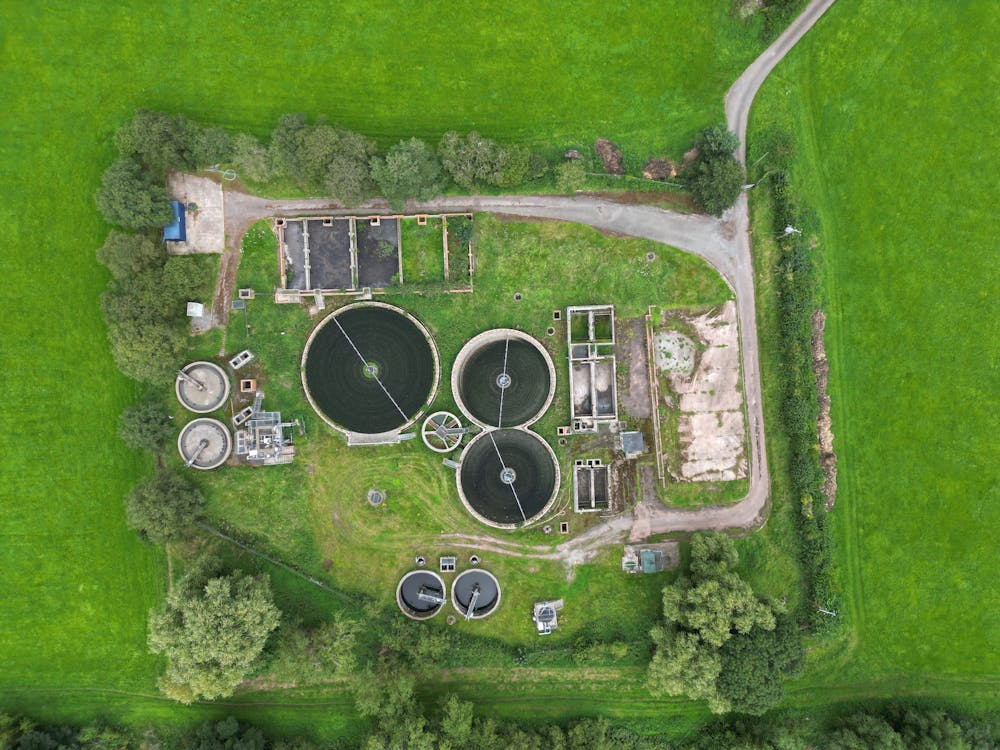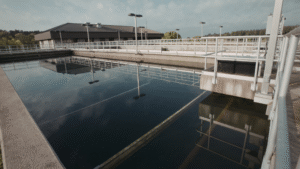Coagulation is one of the most essential steps in water treatment and wastewater treatment. It’s where suspended solids, organic matter, and colloidal particles – too fine to settle on their own – are neutralized and brought together to form denser floc that can be removed through sedimentation, filtration, or flotation.
Without proper coagulation, downstream treatment processes become inefficient or fail entirely. Water remains cloudy, sludge volumes increase, chemical consumption spikes, and regulatory targets become harder to meet. Whether you’re treating raw water for drinking, wastewater for discharge, or process water for reuse, selecting the right coagulant plays a critical role in achieving compliance, efficiency, and reliability.
As industrial and municipal water treatment systems become more complex and regulations tighten, the ability to control suspended particles and natural organic matter using effective coagulants has become more important than ever.
How Coagulants Work: Chemistry Behind the Process
The science behind coagulants is rooted in charge neutralization and particle destabilization. Most particles suspended in untreated water carry a negative surface charge. This keeps them in motion and prevents natural settling. Coagulants work by introducing positively charged molecules – such as cationic metal ions or organic polymers – that bind with these particles and neutralize their charge.
Once destabilized, particles begin to collide and clump together through a process called flocculation, forming larger aggregates (floc) that are significantly easier to remove through settling or filtration. This two-step process – coagulation followed by flocculation – is foundational to almost every water treatment process, from lime softening and DAF to media filtration and membrane pretreatment.
The type of coagulant you use – and how it interacts with your system’s pH, temperature, and flow dynamics – can dramatically affect the success of downstream water treatment and the amount of sludge generated.
Learn more about ETI’s Advanced Coagulant Water Treatment Solutions.
Why Coagulant Selection Matters
While all coagulants aim to perform the same function – neutralizing charge and aggregating particles – not all are created equal. The wrong coagulant (or even the right one applied incorrectly) can result in:
- Poor turbidity reduction
- Excessive chemical usage
- Sludge volume increases
- Uncontrolled pH swings
- Incompatibility with filtration or biological systems
This is particularly important in facilities that operate multi-loop systems, treat variable influent quality, or face unique regulatory constraints. For example, using an aluminum-based inorganic coagulant in a system sensitive to residuals may interfere with disinfection processes or increase sludge disposal costs. On the other hand, using a natural biopolymer in high-load wastewater may fail to achieve adequate particle removal without supplemental dosing.
Coagulant choice also affects settling velocity, filter loading, and dewatering performance – all of which play into overall system efficiency and compliance. The selection process must account for water chemistry, target contaminants, system design, and cost structure.
At ETI, coagulant programs are designed to match real-world operational needs. With advanced formulations, from ferric chloride and polyaluminum chloride to biopolymer coagulants and synthetic organic blends, ETI supports tailored solutions that deliver high performance and reduced total cost of ownership.
Types of Coagulants and Their Applications
Inorganic Coagulants
Inorganic coagulants are the most widely used class in both municipal and industrial water treatment. These include aluminum-based and iron-based compounds, both of which are highly effective at destabilizing colloidal material and removing suspended solids through charge neutralization.
Aluminum-Based Coagulants
- Common products: aluminum sulfate (alum), polyaluminum chloride (PAC), and aluminum chlorohydrate (ACH)
- Often used in: drinking water treatment, surface water clarification, low-turbidity water treatment
- Benefits:
- Cost-effective and widely available
- Proven turbidity and color removal
- Strong performance across broad pH ranges
- Limitations:
- May increase sludge volume
- Can require pH adjustment
- Leaves aluminum residuals, which may complicate downstream treatment
Iron-Based Coagulants
- Common products: ferric chloride, ferric sulfate, and ferrous sulfate
- Often used in: wastewater treatment, phosphorus removal, high-strength industrial flows
- Benefits:
- Strong coagulation under wide pH conditions
- Effective at heavy metal removal
- Improves sludge dewatering
- Limitations:
- Inorganic coagulants can generate significantly heavier hydroxide sludge
- May increase corrosion potential if not properly managed
At ETI, inorganic coagulants such as ferric chloride and ferric sulfate are available in both liquid and solid forms, with optimized blends designed for specific contaminants, discharge goals, and sludge reduction strategies.
Learn more about ETI’s Inorganic Coagulants.
Organic Coagulants
Organic coagulants are based on synthetic polymers or natural biopolymers that use long-chain molecules to bind and neutralize particles in raw water treatment plants. These water treatment coagulants often used when facilities want to reduce sludge, operate in sensitive environments, or optimize performance in conjunction with other treatment chemicals.
Synthetic Organic Coagulants
- Common products: polyamines, polyDADMAC, and high molecular weight polymers
- Benefits:
- Lower sludge generation compared to metal-based coagulants
- Highly effective at removing suspended particles, organic matter, and emulsified oils
- Improved compatibility with filtration and membrane systems
- Use cases:
- Food & beverage wastewater
- Petrochemical and refining
- Municipal systems seeking lower metal residuals
Natural Organic Coagulants
- Derived from: plant sources, starch, chitosan, or natural biopolymers
- Benefits:
- Biodegradable and environmentally preferred
- Reduced risk of heavy metal accumulation
- Often require less chlorine downstream
- Limitations:
- May be less effective in high-turbidity or high-load systems
- Can require fine-tuned dosing to avoid underperformance
Organic coagulants are especially useful in water treatment plants where chemical reduction, green initiatives, or lower residual handling are a priority. ETI’s portfolio includes both natural and synthetic formulations to support diverse application needs.
Learn more about ETI’s Organic Coagulants.
Hybrid & Specialty Blends
In many systems, the best-performing solution is neither fully inorganic nor fully organic – but a blend of both. These dual-mechanism coagulants combine the benefits of metal salts and polymers to improve overall system performance.
Benefits of Hybrid Coagulants
- Enhanced floc formation with stronger settling characteristics
- Reduced chemical demand and improved pH stability
- Lower sludge volumes with more efficient dewatering
- Broader contaminant removal (e.g., natural organic matter, color, phosphorus, metals)
ETI also provides application-specific coagulant blends, including:
- Metal-specific removal formulations for mining, metal finishing, and groundwater remediation
- DAF-compatible coagulants for oily wastewater and slaughterhouse discharges
- Low-sludge options for space-constrained facilities or systems seeking to minimize handling costs
The best coagulant isn’t just about chemistry – it’s about fit. Matching the right formulation to a facility’s water matrix, system design, and compliance needs is what turns a good program into a great one.
Performance Considerations, Trends & Selection Guidance
Key Factors That Influence Coagulant Performance
Choosing the right coagulant – be it ferric chloride, ferric sulfate, or a polyamine – isn’t just about product type – it’s about understanding how your water system behaves under real-world conditions. The following factors all impact how well a coagulant performs in your water treatment process:
1. pH and Temperature
Coagulants react differently depending on system pH. Aluminum salts perform best between 6 and 8, while iron salts can function effectively over a wider pH range. Organic coagulants typically offer broader pH compatibility, making them useful in variable conditions.
Temperature also affects reaction speed. Colder water slows down particle collisions, often requiring higher doses or longer retention times to achieve similar clarification results.
2. Turbidity and Suspended Solids Load
High concentrations of suspended particles require stronger or blended coagulant programs to ensure charge neutralization is consistent across influent conditions. Fine colloidal material – like what’s found in textile, food processing, or lab waste – may need high molecular weight polymers to bind particles efficiently.
3. System Design and Treatment Goals
The success of any coagulation treatment is ultimately tied to system layout. For example:
- Facilities with DAF units may benefit from coagulants with enhanced floc buoyancy.
- Plants with limited sludge handling capacity often prioritize low-sludge formulations.
- Biological systems upstream or downstream may be sensitive to certain cationic metal ions or residuals.
Careful coagulant selection helps maintain compatibility across treatment stages – improving effluent clarity, filtration efficiency, and overall system resilience.
Industry Trends and Regulatory Drivers
The water treatment industry is under increasing pressure to deliver higher performance with lower chemical footprint. That’s driving demand for more sustainable and adaptable coagulant programs.
1. Sustainability & Green Chemistry
Many facilities are now exploring natural biopolymers, plant-sourced coagulants, and hybrid options to reduce reliance on heavy metals and minimize hazardous sludge. Organic coagulants generate less waste and align with broader ESG goals.
2. Regulatory Compliance
Tighter discharge permits and the emergence of regulations around emerging contaminants (PFAS, heavy metals, microplastics) are pushing operators to fine-tune their coagulation strategy. pH control, sludge generation, and coagulant residuals are all under increased scrutiny from EPA and state agencies.
3. Automation & Monitoring
More facilities are moving toward automated dosing and real-time monitoring of parameters like TDS, pH, and alkalinity to adjust coagulant feed dynamically. Coagulant strategies that support automation reduce chemical waste and provide tighter process control.
Choosing the Right Coagulant: Key Considerations
There is no one-size-fits-all coagulant. Effective coagulation requires a clear understanding of influent characteristics, treatment objectives, and system limitations. See table below for a quick comparison view:
| Coagulant Type | Best Use Cases | Key Advantages | Potential Limitations |
|---|---|---|---|
| Aluminum-Based | Municipal drinking water, surface water | Cost-effective, good turbidity removal | pH sensitive, higher sludge volume |
| Iron-Based | Wastewater with phosphorus or metals | Phosphorus removal, strong floc, wide pH range | Heavier sludge, may need pH correction |
| Synthetic Organics | Industrial wastewater, low residual targets | Low sludge, strong floc, wide charge range | Higher cost, careful dosing required |
| Natural Organics | Eco-sensitive systems, reuse applications | Biodegradable, low metal content, less residuals | Less effective in high-load or complex systems |
| Hybrid/Blended | Variable influent, multi-loop systems | Versatile, optimized performance, lower total dose | May require technical validation for compatibility |
At ETI, that process includes:
- Laboratory testing of influent water to determine optimal chemistry
- Bench or pilot trials to confirm floc behavior and dose efficiency
- Selection of organic, inorganic, or hybrid coagulants to balance performance and sustainability
- Integration with upstream and downstream treatment systems
- Ongoing monitoring to optimize treatment as influent conditions evolve
Treat Coagulation Like a Strategic Lever – Not a Commodity
Coagulants are more than just line items on a chemical invoice. They shape the entire success of a water treatment system – from clarification and filtration to sludge handling and compliance.
Whether you’re treating high-strength wastewater, producing drinking water, or optimizing reuse systems, the right coagulant will make or break performance. With the right partner, you don’t just get chemistry – you get a strategy, supported by field data, ongoing support, and solutions tailored to your operations.
Ready to optimize your coagulant strategy?
ETI’s technical team helps facilities move from trial-and-error to engineered performance. From custom formulations to system-wide support, we’re here to help you meet your goals – safely, sustainably, and with confidence.
Contact ETI to request a consultation or schedule a treatment evaluation.





